Amyloidosis By Samee almusa 12/01/2017 Amyloidosis


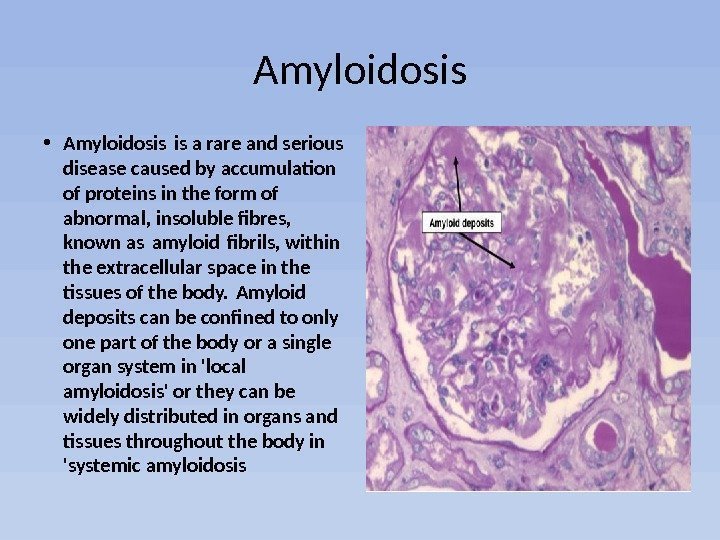
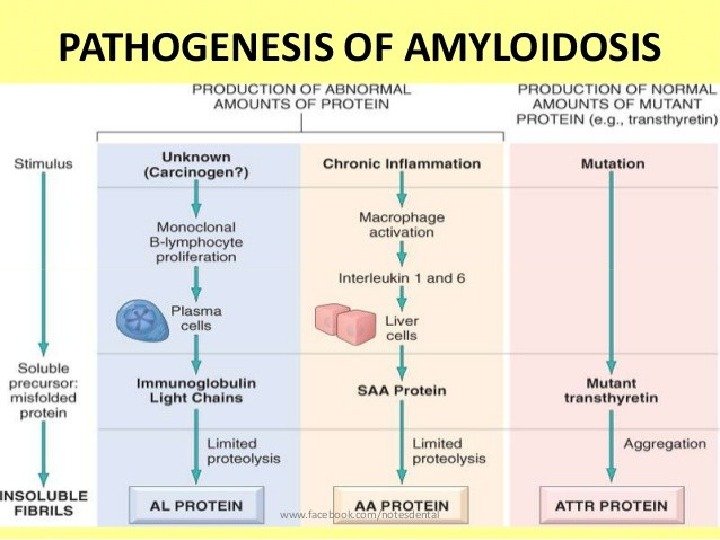

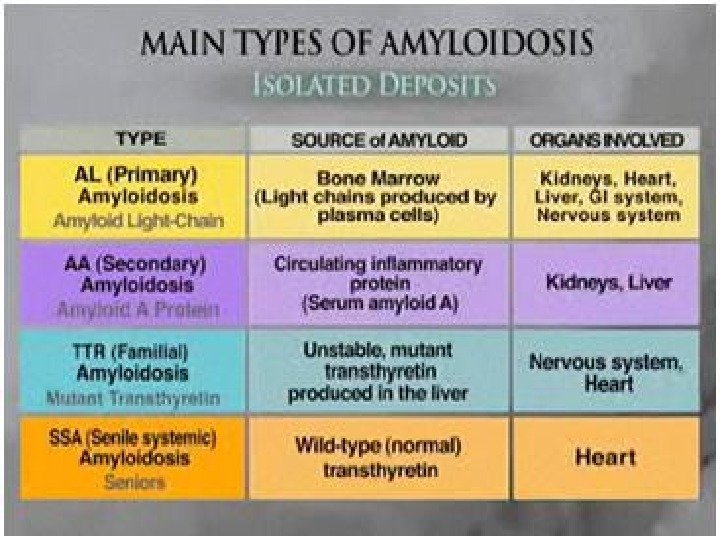

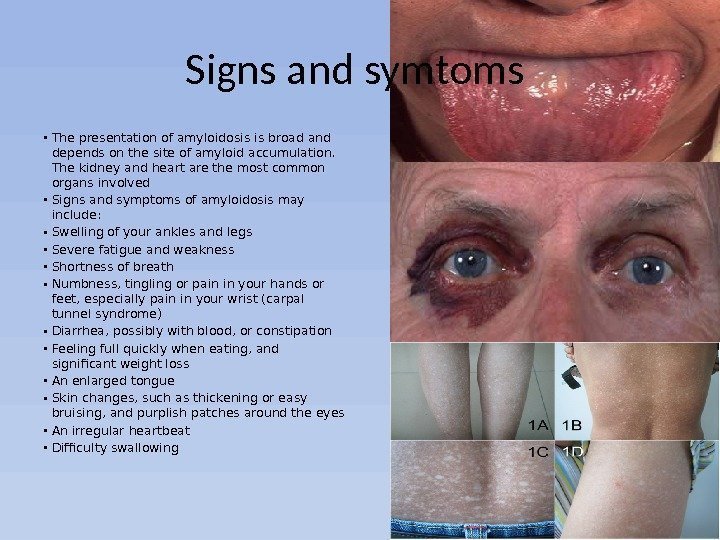
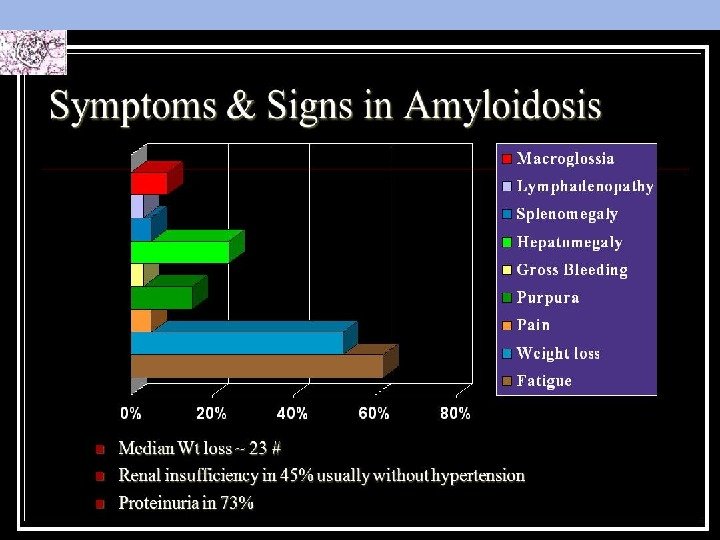

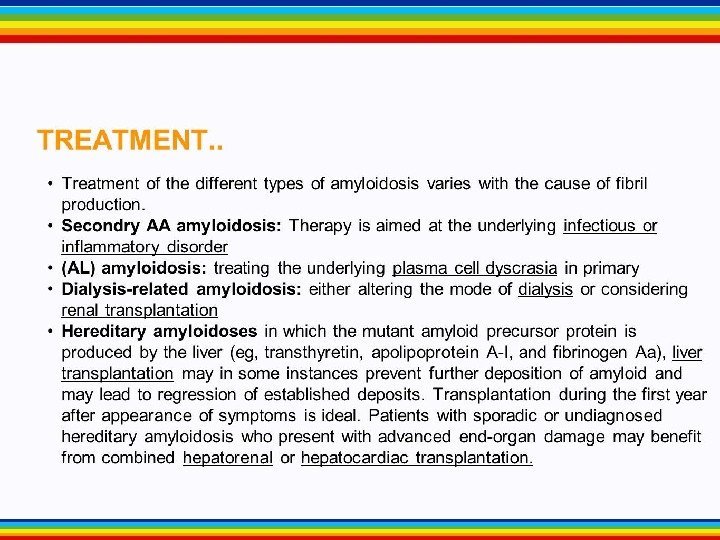
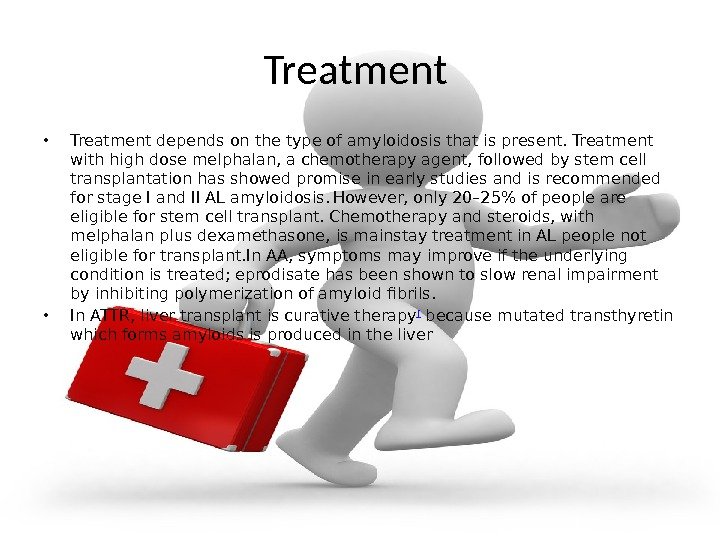

amyloidosis.pptx
- Размер: 1.7 Мб
- Автор:
- Количество слайдов: 12
Описание презентации Amyloidosis By Samee almusa 12/01/2017 Amyloidosis по слайдам
 Amyloidosis By Samee almusa 12/01/
Amyloidosis By Samee almusa 12/01/
 Amyloidosis • Amyloidosis is a rare and serious disease caused by accumulation of proteins in the form of abnormal, insoluble fibres, known as amyloid fibrils, within the extracellular space in the tissues of the body. Amyloid deposits can be confined to only one part of the body or a single organ system in ‘local amyloidosis’ or they can be widely distributed in organs and tissues throughout the body in ‘systemic amyloidosis
Amyloidosis • Amyloidosis is a rare and serious disease caused by accumulation of proteins in the form of abnormal, insoluble fibres, known as amyloid fibrils, within the extracellular space in the tissues of the body. Amyloid deposits can be confined to only one part of the body or a single organ system in ‘local amyloidosis’ or they can be widely distributed in organs and tissues throughout the body in ‘systemic amyloidosis




 Signs and symtoms • The presentation of amyloidosis is broad and depends on the site of amyloid accumulation. The kidney and heart are the most common organs involved • Signs and symptoms of amyloidosis may include: • Swelling of your ankles and legs • Severe fatigue and weakness • Shortness of breath • Numbness, tingling or pain in your hands or feet, especially pain in your wrist (carpal tunnel syndrome) • Diarrhea, possibly with blood, or constipation • Feeling full quickly when eating, and significant weight loss • An enlarged tongue • Skin changes, such as thickening or easy bruising, and purplish patches around the eyes • An irregular heartbeat • Difficulty swallowing
Signs and symtoms • The presentation of amyloidosis is broad and depends on the site of amyloid accumulation. The kidney and heart are the most common organs involved • Signs and symptoms of amyloidosis may include: • Swelling of your ankles and legs • Severe fatigue and weakness • Shortness of breath • Numbness, tingling or pain in your hands or feet, especially pain in your wrist (carpal tunnel syndrome) • Diarrhea, possibly with blood, or constipation • Feeling full quickly when eating, and significant weight loss • An enlarged tongue • Skin changes, such as thickening or easy bruising, and purplish patches around the eyes • An irregular heartbeat • Difficulty swallowing

 Diagnosis • Laboratory tests. Your blood and urine may be analyzed for abnormal protein that can indicate amyloidosis. Depending on your signs and symptoms, you may also have thyroid and liver function tests. • Biopsy. A tissue sample may be taken and checked for signs of amyloidosis. The biopsy may be taken from your abdominal fat, bone marrow, or an organ such as your liver or kidney. Tissue analysis can help determine the type of amyloid deposit. • Imaging tests. Images of the organs affected by amyloidosis can help establish the extent of your disease. Echocardiogram may be used to assess the size and functioning of your heart.
Diagnosis • Laboratory tests. Your blood and urine may be analyzed for abnormal protein that can indicate amyloidosis. Depending on your signs and symptoms, you may also have thyroid and liver function tests. • Biopsy. A tissue sample may be taken and checked for signs of amyloidosis. The biopsy may be taken from your abdominal fat, bone marrow, or an organ such as your liver or kidney. Tissue analysis can help determine the type of amyloid deposit. • Imaging tests. Images of the organs affected by amyloidosis can help establish the extent of your disease. Echocardiogram may be used to assess the size and functioning of your heart.

 Treatment • Treatment depends on the type of amyloidosis that is present. Treatment with high dosemelphalan, a chemotherapy agent, followed by stem cell transplantation has showed promise in early studies and is recommended for stage I and II AL amyloidosis. However, only 20– 25% of people are eligible for stem cell transplant. Chemotherapy and steroids, with melphalan plus dexamethasone, is mainstay treatment in AL people not eligible for transplant. In AA, symptoms may improve if the underlying condition is treated; eprodisate has been shown to slow renal impairment by inhibiting polymerization of amyloid fibrils. • In ATTR, liver transplant is curative therapy [ because mutated transthyretin which forms amyloids is produced in the liver
Treatment • Treatment depends on the type of amyloidosis that is present. Treatment with high dosemelphalan, a chemotherapy agent, followed by stem cell transplantation has showed promise in early studies and is recommended for stage I and II AL amyloidosis. However, only 20– 25% of people are eligible for stem cell transplant. Chemotherapy and steroids, with melphalan plus dexamethasone, is mainstay treatment in AL people not eligible for transplant. In AA, symptoms may improve if the underlying condition is treated; eprodisate has been shown to slow renal impairment by inhibiting polymerization of amyloid fibrils. • In ATTR, liver transplant is curative therapy [ because mutated transthyretin which forms amyloids is produced in the liver


